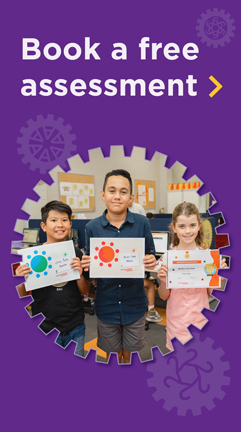How to decide on the right-fit high school for your child

Making the move to high school and choosing which school is the right fit is a big decision for you and your child. You will be faced with an overwhelming amount of ways to access information from school Open Days to enrolment tours - so which are most effective for providing a true view of the school’s day to day? With every engagement comes a weighing up of what factors matter most to you. Here are 7 tips to objectively assess a school from a range of insights, so that you can pave the next steps in your child's education with confidence.
1. See the school outside of set showcase days
Take advantage of every opportunity to view the school in typical, everyday operations apart from Open Days which merely "showcase" what they offer. Open Days are a little like a striking window display - you need to go in to see more.
You can phone the school and ask to schedule a time to have a viewing tour on a normal operating day. This way you’ll gather information about how the teachers interact with their students, and how the students interact with their teachers and each other. You’ll see what “feels” right. You’ll know whether your child will “fit” this school and whether this school will “fit” your child.
2. Talk to current parents
By speaking with parents who already have children attending the school, you will get first-hand information about all the benefits and perhaps some of the disadvantages from being part of the school. Consider aspects like the parent community, how conflicts are resolved, the communication they receive and how frequently this is, and the quality of pastoral care on hand.
3. Investigate available communication channels
Look into what systems and opportunities the school has in place to keep you “in the loop” about how your child is progressing, opportunities that are available for extracurricular involvement and the community calendar. From the channels that are available, consider how frequently communication comes from the school - is it personalised or ‘en masse’? On a similar note, how welcomed is your communication back to the school and what forms can this take, from accessing specific teachers to providing feedback to the board?
4. Review student performance
Check out the school’s results – the senior years might seem a long way off, but it’s an indication of how children are prepared leading up to exams.
5. Weigh up curriculum options
Check out the curriculum options in the senior part of the school - is an international curriculum on offer? Even if an international university isn’t the specific goal, curricula like the IB or A levels can represent a school’s academic rigour and global outlook. It may seem a long way off, but it is worth consideration.
6. Weigh up extracurricular opportunities
It depends on how important sports options and cultural opportunities are to you and your child alongside academic opportunities. Scanning over the website, newsletter and speaking to department heads can tell you what the school gets involved in – challenges, competitions, performances and other opportunities. Is there something here that will excite and positively challenge your child?
7. Investigate leadership opportunities.
Typically you can get to know student leaders through showcase days like school tours, open days and also in the school’s communications out to the community. They represent the qualities the school celebrates and fosters, and can also guide you with the process they followed to secure their leadership opportunities.
By considering leadership roles, you can get a sense of how well the school equips your child with the skills and opportunities for the next step in their education – whether it is tertiary education, vocational training or the workforce.
We know that every child is unique. Consider what’s best for them – how the school is going to meet any needs they may have – special abilities, learning, physical, social and behavioural needs. Furthermore, how does the school fit your family’s “ethos” and values?
Once you have arrived at a shortlist, discuss the options with your child and talk through the pros and cons of each. You can communicate your preference but the key is to listen to your child about what they prefer – in the end they have to be “on board” with the final decision.
If your child needs support in their final year before heading to high school, NumberWorks’nWords tuition can help. We offer personalised tutoring in maths and English that boosts confidence and delivers results. Get in touch with your local centre to learn more.



